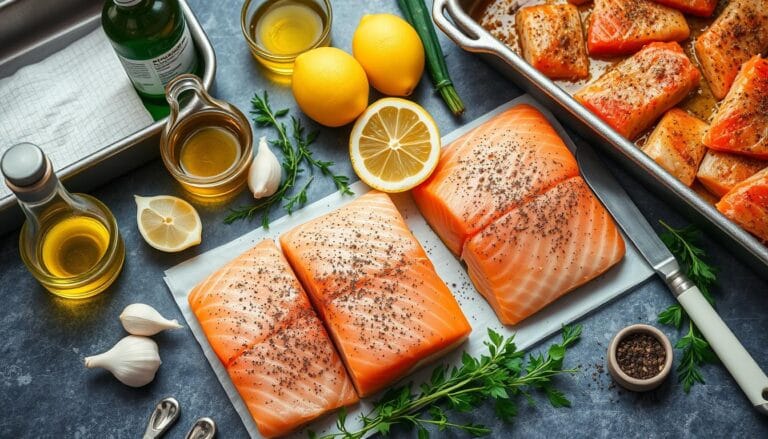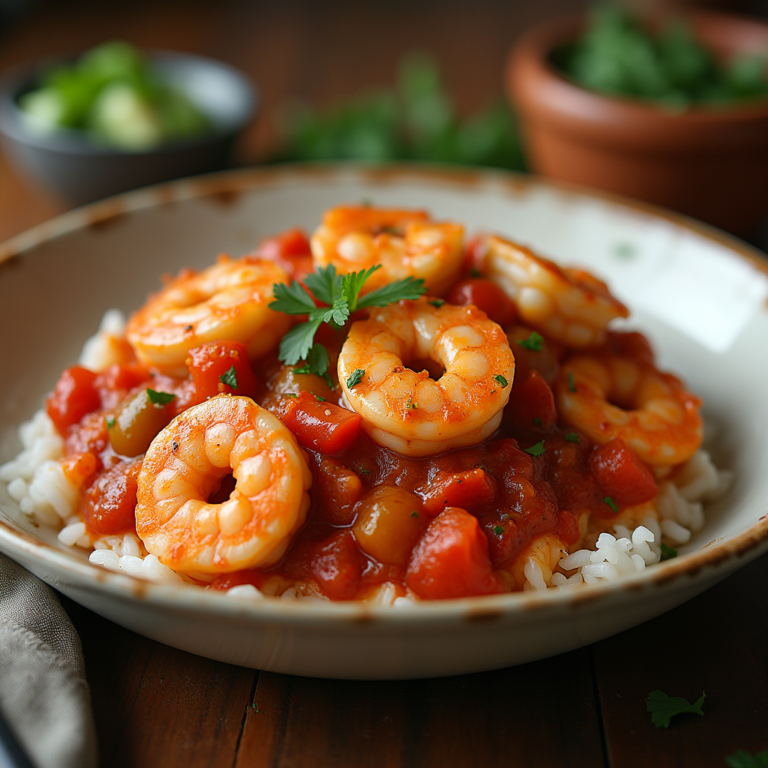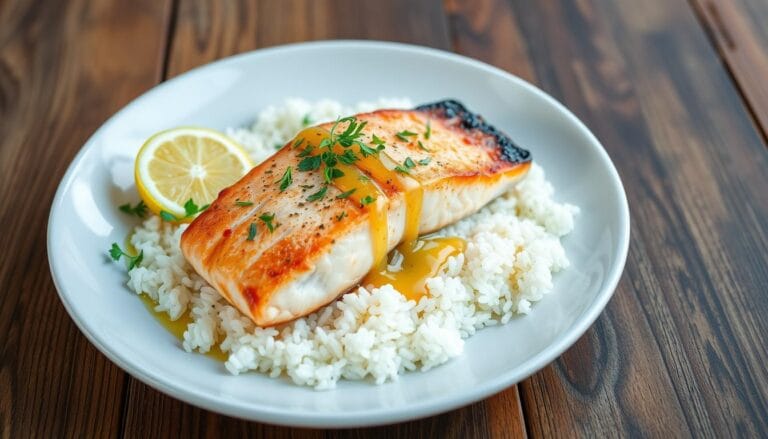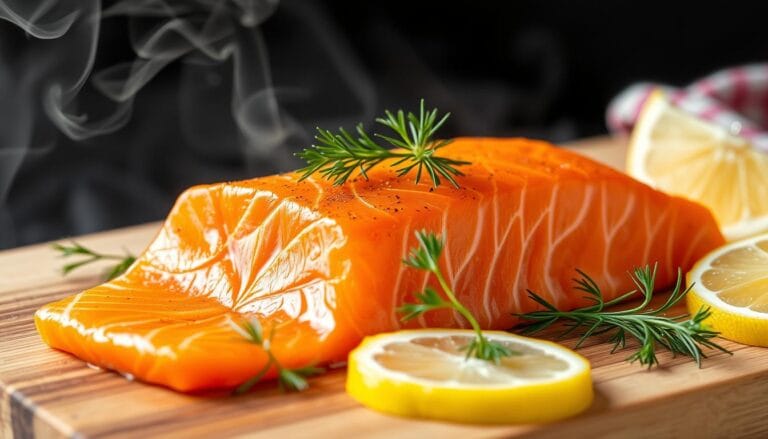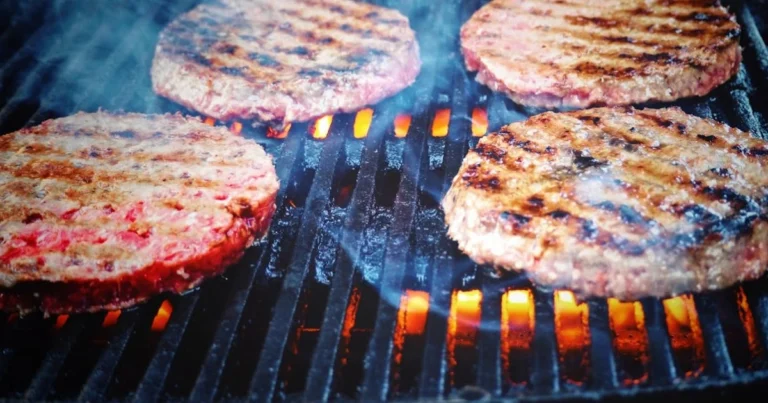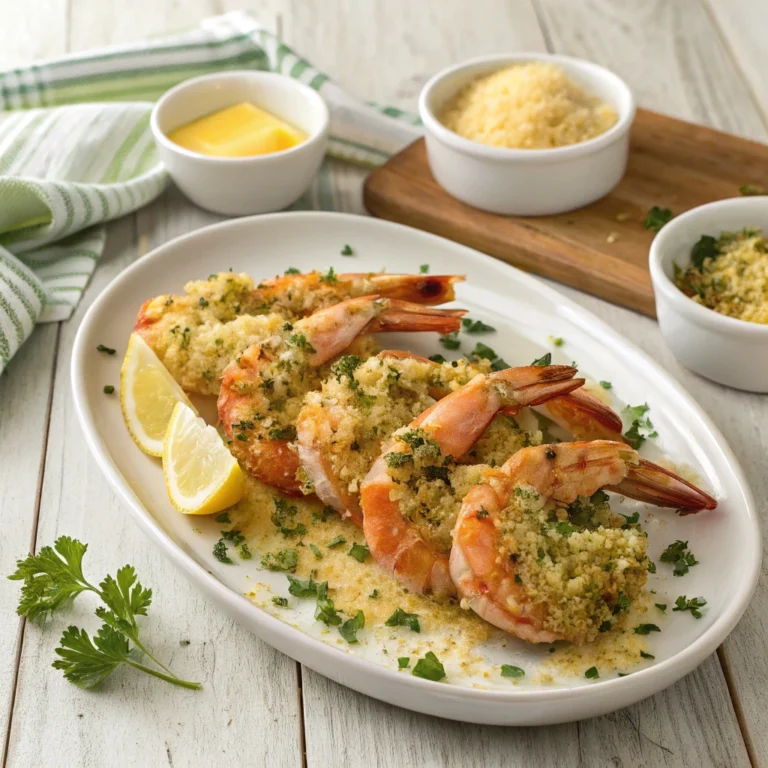Best Spices for Spicy Salmon: Top Flavorful Combinations
As the sun set, it cast a warm glow over my kitchen. A fresh salmon fillet caught my eye, its pink color vibrant. The smell of spices filled the air, making me think of all the tasty spicy salmon dishes I’d made.
In that moment, I knew I had to share my secrets. I wanted to help you make zesty fillets that would take your taste buds on a journey.
Salmon is a versatile protein that can be transformed with the right spices. It can go from a simple baked fish to a culinary masterpiece. Whether you want a bold flavor or a subtle smoky taste, the right spices can make it happen. Let’s explore the best spice combinations and cooking techniques to take your salmon to the next level.
Table of Contents
Understanding the Art of Seasoning Salmon
Improving your salmon dishes starts with seasoning. Knowing how flavors absorb is key to making your hot salmon recipe or smoky salmon dish better. This guide will help you season salmon perfectly, from using fresh or frozen salmon to the right seasoning temperature.
The Science Behind Flavor Absorption
Turning a simple salmon fillet into a flavorful dish is all about flavor absorption. As salmon cooks, it soaks up the flavors from seasonings and spices. By understanding this, you can make your salmon dishes more delicious.
Quality Selection of Fresh vs. Frozen Salmon
Fresh salmon is best for flavor and texture, but frozen salmon can also work well. Fresh salmon, like king salmon, has a rich taste and tender texture. Frozen salmon, when cooked right, can also be tasty, especially in hot or smoky dishes.
Optimal Temperature for Seasoning Application
The temperature you use for seasoning is important. A hot oven or grill helps flavors stick to the salmon. This way, every bite is full of flavor, whether it’s a hot or smoky dish.
| Cooking Method | Optimal Temperature Range | Recommended Seasoning Application |
|---|---|---|
| Grilling | 450-550°F (232-288°C) | Apply seasoning just before placing salmon on the grill |
| Baking | 400-450°F (204-232°C) | Rub seasoning onto salmon fillets before placing in the oven |
| Pan-Searing | 400-450°F (204-232°C) | Season salmon just before adding to the hot pan |
| Poaching | 180-205°F (82-96°C) | Gently infuse poaching liquid with herbs and spices |
Essential Spice Cabinet Must-Haves for Salmon
Want to make your salmon dishes more exciting? Look no further than your spice cabinet. Find out the key spices that turn a plain salmon fillet into a salmon with kick or a flavorful salmon entrée.
Begin with the basics: salt and pepper. Fresh black pepper is crucial, adding a savory taste. Add sea salt or Himalayan pink salt for balance.
For sweetness, keep brown sugar ready. It makes a tasty glaze that caramelizes beautifully, adding depth to your salmon.
- Paprika, both sweet and smoked, adds a warm, smoky flavor that goes great with fish.
- Garlic powder boosts the flavor, working well with herbs and spices.
- Lemon zest and smoked paprika mix for a bright, citrusy taste that contrasts with the salmon’s richness.
For a bit of heat, try chipotle powder or cayenne pepper. They add a customizable warmth to your dish.
Herbs like thyme, rosemary, and oregano also enhance your salmon. They add an earthy, herbaceous taste that complements the fish.
With these spices, you can make a salmon with kick or a flavorful salmon entrée. Your guests will love it, and so will your taste buds.
Classic Brown Sugar and Smoked Paprika Blend
Discover the secret to a perfectly balanced salmon dish with a classic brown sugar and smoked paprika blend. This mix creates a sweet and smoky exterior. It takes your salmon to new flavor heights.
Perfect Sugar-to-Spice Ratio
The secret to this blend is the perfect mix of brown sugar and smoked paprika. Use 2 tablespoons of brown sugar to 1/2 teaspoon of smoked paprika. This ensures a sweet-to-smoky balance without overpowering flavors.
Caramelization Techniques
To get a caramelized crust, season the salmon and let it sit at room temperature for 15-20 minutes before baking. This lets the sugars react with the heat, making a crispy and flavorful crust. Finish with a quick broil for extra caramelization.
Complementary Herbs
Add to the blend with herbs like thyme and parsley. Thyme’s earthy taste and parsley’s fresh flavor complement the sweet and smoky notes. Together, they create a well-rounded seasoning for your salmon with spices.
“The perfect balance of sweet and smoky sets this salmon seasoning blend apart, making it a true standout in my recipe repertoire.”
Mediterranean-Inspired Seasoning Combinations
Elevate your baked salmon with Mediterranean flavors. The piquant fish pairs well with the bold, herbaceous notes of this regional seasoning approach.
Start by coating your salmon with olive oil, lemon juice, and garlic. This marinade sets the stage for the Mediterranean taste. It lets the zesty fillet shine.
Then, add dried oregano and thyme over the salmon. These herbs bring a real Mediterranean flavor. They make the piquant fish taste robust and savory.
| Ingredient | Amount |
|---|---|
| Salmon fillets | 2 lbs (1.1 lbs or 500 g) |
| Olive oil | 2 tbsp |
| Lemon juice | 1 tbsp (about 1/2 lemon) |
| Garlic, minced | 4 cloves |
| Dried oregano | 2 tsp |
| Dried thyme | 2 tsp |
| Kosher salt | ⅔ tsp |
| Black pepper | ½ tsp |
Finish with fresh herbs like parsley, basil, or dill. This adds a vibrant touch. It shows off the piquant fish‘s beauty and adds Mediterranean flavors.
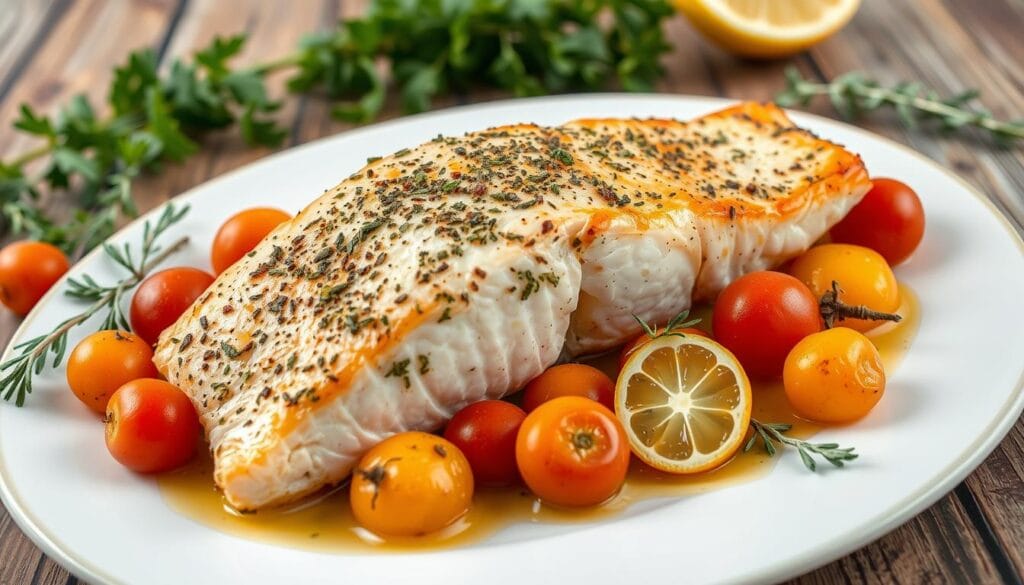
“The Mediterranean diet is not just a diet, it’s a lifestyle. It’s about enjoying the simple pleasures in life, like a good meal with loved ones.”
Creating the Perfect Spicy Salmon Experience
Take your seafood to the next level by mastering spicy salmon. The secret is in adjusting the heat and mixing it with other flavors.
Heat Level Customization
Change the heat of your spicy salmon with different spices. Use cayenne pepper, chipotle powder, or crushed red pepper flakes. Start with a little and add more until it’s just right.
Balancing Spice with Other Flavors
Spice is key, but balance is everything. Add sweetness with honey or brown sugar to cool it down. Herbs like fresh ginger or cilantro add freshness and contrast.
Seasoning is key for even spice. Rub spices all over the salmon. This ensures every bite is spicy.
Mastering spicy salmon boosts your cooking skills. It impresses everyone with its bold flavors and lasting taste.
| Seasoning | Percentage |
|---|---|
| Onion Powder | 25% |
| Crushed Red Pepper Flakes | 12.5% |
| Smoked Paprika | 12.5% |
| Salt | 12.5% |
| Pepper | 12.5% |
| Dried Parsley | 12.5% |
“By mastering the art of creating the perfect spicy salmon experience, you’ll elevate your culinary skills and impress your guests with a dish that tantalizes the taste buds and leaves a lasting impression.”
Garlic and Herb Seasoning Blends
Make your salmon dish even better with a zesty garlic and herb seasoning. Mix fresh garlic with herbs like parsley, dill, and chives. This blend brings out the salmon’s natural taste without being too strong.
Getting the flavors right is key. Fresh garlic adds a savory punch. Dried herbs like oregano, basil, or thyme add depth. Fresh herbs like parsley, dill, or chives bring a bright, herbaceous note that complements the salmon’s richness.
Here’s a guide to making your own garlic and herb seasoning:
- Garlic: ¼ cup granulated garlic or powder
- Dried Herbs: ¼ cup dried oregano, basil, or thyme
- Fresh Herbs: 1 bunch, finely chopped (parsley, dill, chives)
- Spices: 1 tablespoon black pepper, 2 tablespoons salt
This seasoning is great on many proteins, like chicken, pork, and salmon. Rub it on the salmon before cooking for a tasty, herb-infused crust.
| Nutritional Information (per 2 tsp serving) | Value |
|---|---|
| Calories | 8 |
| Carbohydrates | 2g |
| Protein | 0.4g |
| Fat | 0.1g |
| Sodium | 281mg |
With this garlic and herb seasoning, you can make delicious salmon dishes. Try different herb mixes and adjust the amounts to your liking. The possibilities are endless for making your salmon even more flavorful.
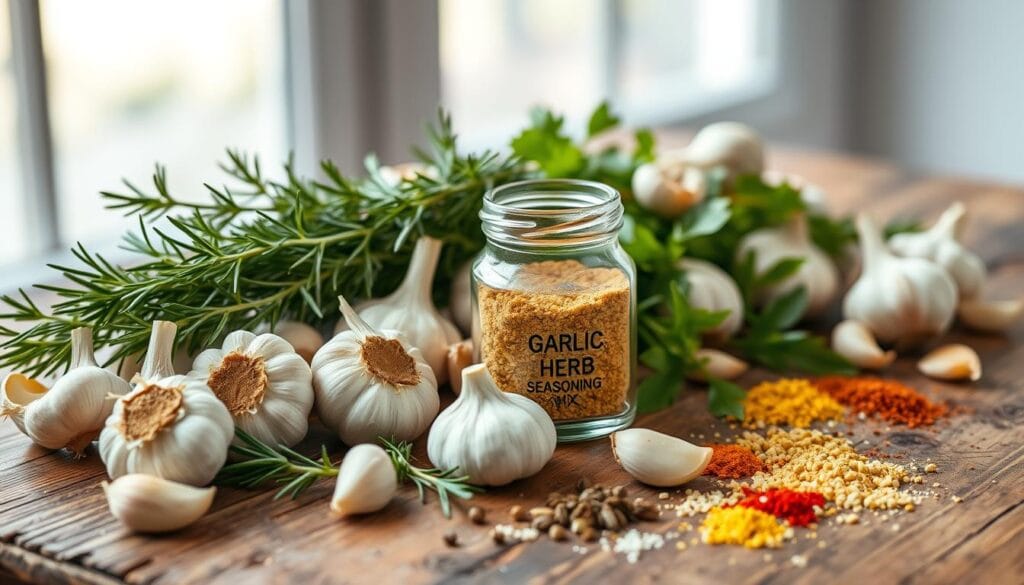
Honey-Based Glazes and Seasoning Combinations
Take your salmon dishes to the next level with sweet and savory flavors. Honey-based glazes and seasoning combos can turn a simple smoky salmon dish into a feast for the senses. Learn how to make a salmon with kick that will make your taste buds dance.
Sweet and Savory Balance
Creating a perfect honey-based glaze is all about finding the right mix. Mix honey’s sweet caramel notes with soy sauce’s umami, spices’ warmth, and citrus’ zest. This blend will enhance the salmon’s natural sweetness.
Application Techniques
- Apply the glaze during the final minutes of baking or broiling for a glossy finish.
- Brush the glaze evenly on the salmon fillets for full flavor absorption.
- Try basting the salmon with the glaze a few times to add more flavor layers.
Mastering honey-based glazes and seasoning combos can take your smoky salmon dish to new heights. You’ll create a salmon with kick that will wow your guests and satisfy your taste buds.
“The key to a truly exceptional honey-glazed salmon is in the balance of sweet, savory, and spice. It’s a delicate dance that transforms the fish into a culinary masterpiece.”
Asian-Inspired Seasoning Profiles
Elevate your salmon dishes with bold, flavorful Asian-inspired seasonings. Learn how to mix sweet, salty, and umami flavors. These hot salmon recipe and piquant fish dishes will be irresistible.
Begin with soy sauce, which brings a rich, savory taste to your salmon. Add ginger’s warmth and sesame oil’s nutty flavor for a teriyaki glaze. This glaze caramelizes beautifully when baked or grilled.
Try a miso-based seasoning by mixing white or yellow miso paste, rice vinegar, and honey. This blend adds umami flavor and creates a sticky glaze. It clings to the fish, offering a fantastic taste in every bite.
- Add sriracha or chili-based sauces for a hint of heat. They balance the dish’s sweetness and saltiness.
- Top with sesame seeds, sliced scallions, or chopped cilantro. They add color and a fresh, herbal taste.
Whether you like a sweet teriyaki-glazed salmon or a miso-marinated fillet, these Asian-inspired seasoning profiles will wow your taste buds. They take you on a culinary journey that’s sure to impress.
“The secret to a truly exceptional Asian-inspired salmon dish lies in the perfect harmony of flavors – the umami richness of soy, the warmth of ginger, and the subtle sweetness that ties it all together.”
Time and Temperature Guidelines for Perfect Results
To get the perfect flavor and texture in your salmon dish, pay close attention to cooking time and temperature. Knowing the right seasoning time and cooking temperatures is crucial. This ensures your salmon is moist, tender, and full of flavor.
Seasoning Duration Guidelines
Season your salmon at least 30 minutes before cooking for the best results. This lets the spices and herbs soak into the fish, enhancing the flavor. Letting the seasoned salmon rest at room temperature helps it absorb more flavor.
Optimal Cooking Temperatures
The best oven temperature for baking salmon is 450°F (232°C). This high heat creates a tasty crust on the outside while keeping the inside moist. The FDA says salmon should be cooked to 145°F (63°C) to be fully cooked. However, many chefs suggest removing it from heat at 135°F (57°C) for juicier results.
Cooking times vary based on the salmon’s thickness. For a 6-ounce fillet, bake for 11 to 14 minutes. For a 1 3/4-pound side, bake for 15 to 18 minutes. Always check with a meat thermometer to ensure the salmon is cooked to your liking.
By following these guidelines, you can make perfectly seasoned and cooked salmon every time. This will create a delicious salmon dish that will impress your guests.
Pairing Seasonings with Different Cooking Methods
Improving the taste of your zesty fillet or salmon with heat is more than picking the right spices. The cooking method you use changes how flavors are absorbed and shown. Learning to match seasonings with cooking methods is crucial for a great salmon dish.
For baked salmon, a mix of brown sugar and smoked paprika is perfect. The slow cooking lets the flavors mix and sweeten, making a tasty mix of sweet and savory. Grilling calls for lighter flavors, like fresh herbs and citrus, to avoid being overpowered by smoke.
Pan-searing salmon is great for bold flavors, like teriyaki or ginger-garlic rubs. The fast, hot cooking lets these strong tastes get into the fish without being too much. Poaching salmon with lemon, dill, and white wine makes it elegant and subtle.
| Cooking Method | Recommended Seasoning Approach |
|---|---|
| Baking | Robust, caramelizing blends (e.g., brown sugar and smoked paprika) |
| Grilling | Lighter, fresh herb and citrus-based seasonings |
| Pan-searing | Bold, Asian-inspired flavors (e.g., teriyaki, ginger-garlic) |
| Poaching | Delicate, aromatic seasonings (e.g., lemon, dill, white wine) |
Knowing how cooking methods change seasoning flavors opens up a world of taste for your salmon. Try different cooking and spice methods to find the best way to make your zesty fillet or salmon with heat stand out.
Conclusion
Making the perfect seasoned baked salmon is an art. It mixes quality ingredients, the right seasonings, and cooking methods. You can try classic flavors or bold, spicy ones. The goal is to find your favorite taste.
Salmon is great for trying different flavors. You can use herbs, spices, or citrus. Knowing how to cook it right makes your dish delicious. This will impress everyone at your table.
Don’t be shy to try new flavors and cooking ways. With the right spices and a bit of creativity, your spicy salmon and flavorful salmon entrée will be amazing. It will make your meals unforgettable.

